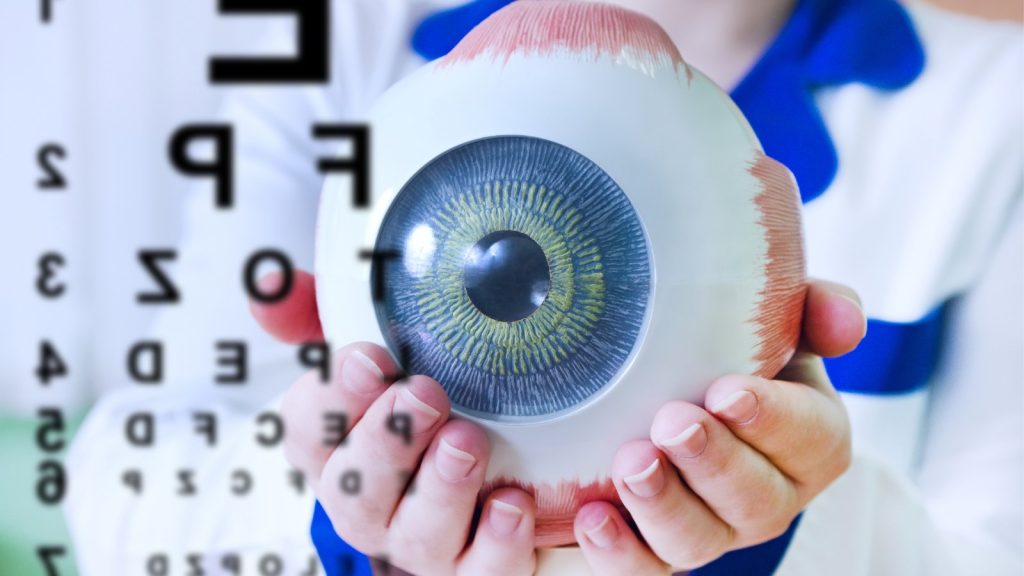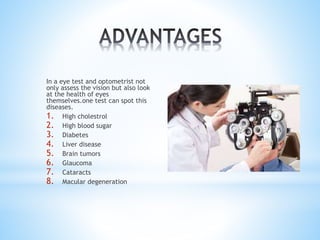The Duty of Advanced Diagnostic Equipment in Identifying Eye Disorders
In the world of ophthalmology, the application of advanced diagnostic tools has reinvented the very early recognition and monitoring of different eye conditions. From detecting subtle changes in the optic nerve to checking the development of retinal conditions, these modern technologies play a pivotal role in enhancing the accuracy and effectiveness of identifying ocular conditions. As the demand for accurate and timely diagnoses continues to expand, the assimilation of advanced tools like optical coherence tomography and visual area screening has actually ended up being important in the realm of eye care. The intricate interplay between modern technology and ocular methods not only clarifies elaborate pathologies but also opens up doors to tailored treatment techniques.
Value of Early Medical Diagnosis
Early diagnosis plays a crucial function in the effective administration and treatment of eye problems. Timely recognition of eye conditions is crucial as it permits for prompt intervention, potentially protecting against additional development of the illness and decreasing long-lasting difficulties. By finding eye disorders at a beginning, doctor can offer suitable therapy plans tailored to the details condition, eventually bring about far better outcomes for individuals. Very early medical diagnosis enables individuals to accessibility necessary support solutions and resources quicker, enhancing their total top quality of life.

Modern Technology for Identifying Glaucoma
Cutting-edge diagnostic technologies play a critical duty in the very early discovery and surveillance of glaucoma, a leading reason of irreparable loss of sight worldwide. Another advanced tool is visual field testing, which maps the sensitivity of a patient's visual area, aiding to detect any locations of vision loss characteristic of glaucoma. These advanced analysis tools enable ophthalmologists to diagnose glaucoma in its very early Recommended Reading phases, enabling for timely intervention and better management of the condition to protect against vision loss.
Role of Optical Comprehensibility Tomography

OCT's ability to quantify retinal nerve fiber layer density permits for precise and objective measurements, helping in the early detection of glaucoma also prior to aesthetic area issues become apparent. In general, OCT plays a crucial role in improving the analysis precision and administration of glaucoma, inevitably contributing to far better end results for individuals at risk of vision loss.
Enhancing Diagnosis With Visual Area Testing
An essential element in thorough sensory examinations, visual area testing plays an essential role in improving the analysis process for various eye conditions. By analyzing the full degree of a person's visual field, this test gives essential information concerning the practical integrity of the whole visual pathway, from the retina to the aesthetic cortex.
Aesthetic field screening is especially important in the medical diagnosis and administration of conditions such as glaucoma, optic nerve problems, and different neurological diseases that can influence vision. Through measurable measurements of outer and central vision, medical professionals can discover subtle modifications that may show the existence or development of these click this site disorders, also before noticeable signs occur.
In addition, visual area screening enables for the surveillance of treatment efficiency, helping eye doctors customize therapeutic treatments to individual clients. eyecare near me. By tracking adjustments in visual field efficiency over time, doctor can make enlightened decisions regarding readjusting medications, advising surgical interventions, or carrying out various other appropriate steps to maintain or boost a client's visual feature
Taking Care Of Macular Deterioration

Final Thought
In verdict, advanced diagnostic tools play a vital duty in recognizing eye disorders early on. Technologies such as Optical Coherence Tomography and visual field testing have actually substantially boosted the precision and effectiveness of detecting problems like glaucoma and macular deterioration.